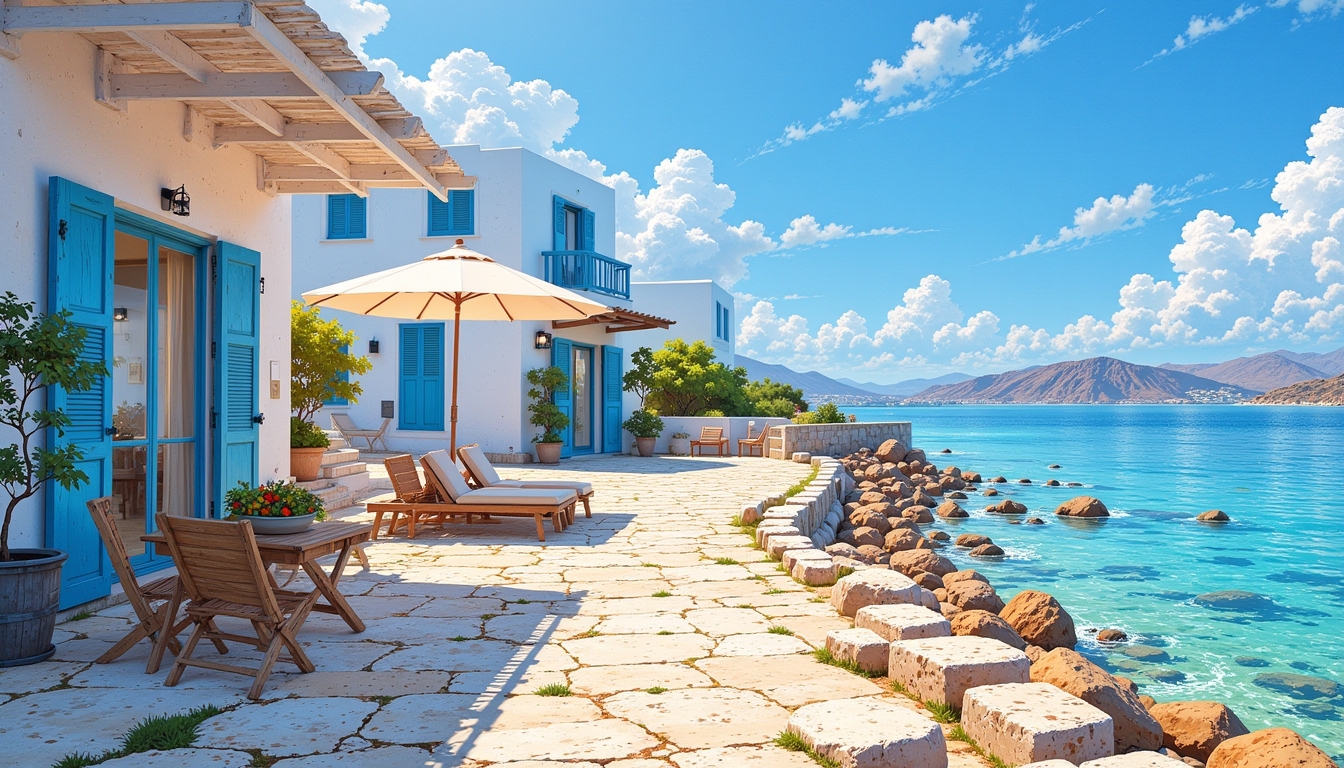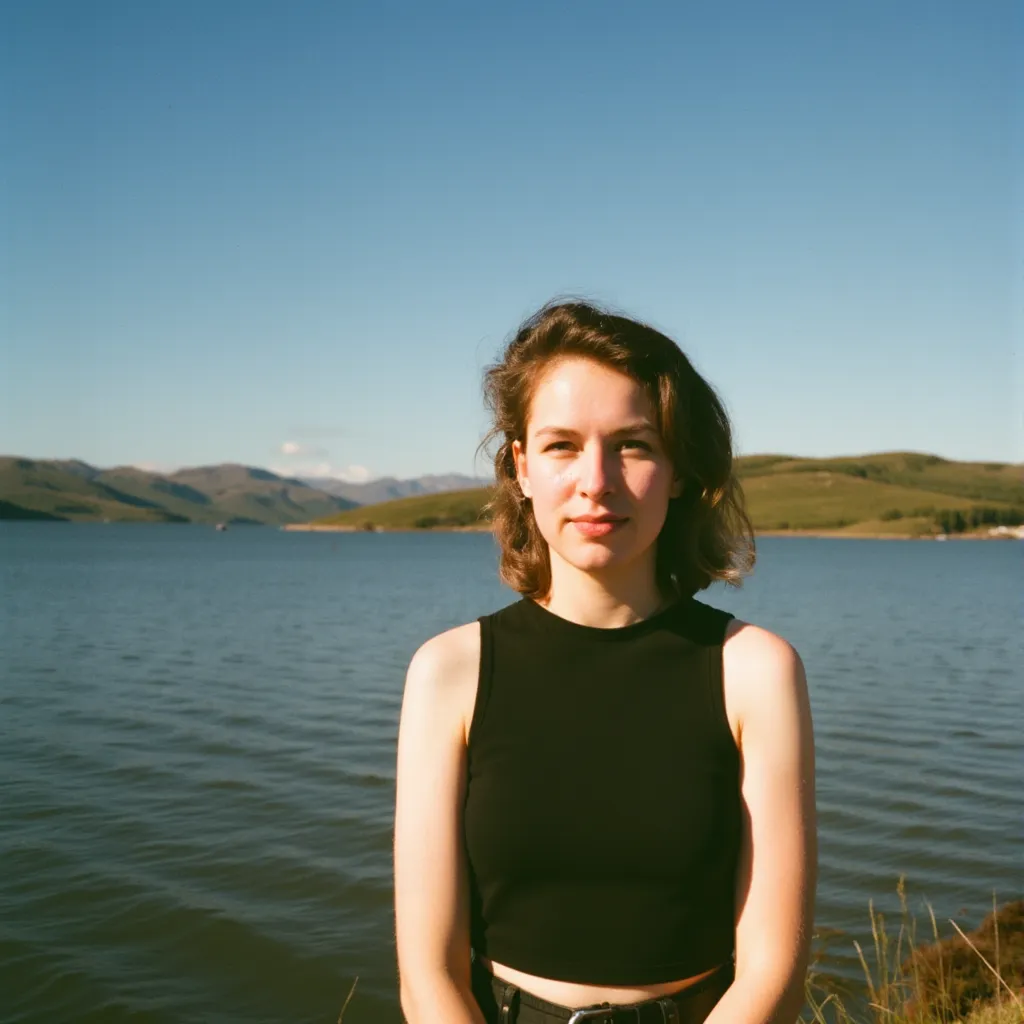flux-ghibsky-illustration
Maintainer: aleksa-codes

13

| Property | Value |
|---|---|
| Run this model | Run on Replicate |
| API spec | View on Replicate |
| Github link | No Github link provided |
| Paper link | No paper link provided |
Create account to get full access
Model overview
The flux-ghibsky-illustration model is a powerful AI model developed by aleksa-codes that can create serene and enchanting landscapes with vibrant, surreal skies and intricate, Ghibli-inspired elements. This model is part of the Flux family of models, which includes similar creations like flux-softserve-anime, flux-dev-lora, flux-half-illustration, and flux-dev-realism.
Model inputs and outputs
The flux-ghibsky-illustration model takes a variety of inputs, including a prompt, seed, aspect ratio, number of outputs, guidance scale, and more. These inputs allow you to customize the generated images to your specific needs. The model then outputs a set of images that reflect the provided prompt and settings.
Inputs
- Prompt: The text prompt that describes the desired image
- Seed: A random seed to ensure reproducible generation
- Aspect Ratio: The aspect ratio for the generated image, which can be set to a predefined ratio or custom dimensions
- Number of Outputs: The number of images to generate
- Guidance Scale: A parameter that controls the balance between the prompt and the model's own learned patterns
Outputs
- Images: The generated images that match the input prompt and settings, outputted in the specified format (e.g., WEBP)
Capabilities
The flux-ghibsky-illustration model excels at creating captivating, Ghibli-inspired landscapes with a serene and dreamlike quality. By leveraging the "GHIBSKY style" prompt, the model is able to generate images that evoke the atmospheric beauty found in the works of acclaimed anime director Makoto Shinkai.
What can I use it for?
The flux-ghibsky-illustration model could be useful for a variety of creative projects, such as concept art for games or films, illustrations for books or magazines, or even as the basis for digital art commissions. The model's ability to generate unique and visually striking images makes it a valuable tool for artists, designers, and anyone looking to add a touch of magic to their creative work.
Things to try
One interesting aspect of the flux-ghibsky-illustration model is its ability to generate images with a strong sense of mood and atmosphere. By experimenting with different prompts, seed values, and other input parameters, you can explore a wide range of visual styles and themes, from serene and tranquil to vibrant and surreal. Try combining the "GHIBSKY style" prompt with various landscape elements, weather conditions, or even fantastical creatures to see what kinds of enchanting scenes the model can produce.
This summary was produced with help from an AI and may contain inaccuracies - check out the links to read the original source documents!
Related Models

flux-koda

1
flux-koda is a Lora-based model created by Replicate user aramintak. It is part of the "Flux" series of models, which includes similar models like flux-cinestill, flux-dev-multi-lora, and flux-softserve-anime. These models are designed to produce images with a distinctive visual style by applying Lora techniques. Model inputs and outputs The flux-koda model accepts a variety of inputs, including the prompt, seed, aspect ratio, and guidance scale. The output is an array of image URLs, with the number of outputs determined by the "Num Outputs" parameter. Inputs Prompt**: The text prompt that describes the desired image. Seed**: The random seed value used for reproducible image generation. Width/Height**: The size of the generated image, in pixels. Aspect Ratio**: The aspect ratio of the generated image, which can be set to a predefined value or to "custom" for arbitrary dimensions. Num Outputs**: The number of images to generate, up to a maximum of 4. Guidance Scale**: A parameter that controls the influence of the prompt on the generated image. Num Inference Steps**: The number of steps used in the diffusion process to generate the image. Extra Lora**: An additional Lora model to be combined with the primary model. Lora Scale**: The strength of the primary Lora model. Extra Lora Scale**: The strength of the additional Lora model. Outputs Image URLs**: An array of URLs pointing to the generated images. Capabilities The flux-koda model is capable of generating images with a unique visual style by combining the core Stable Diffusion model with Lora techniques. The resulting images often have a painterly, cinematic quality that is distinct from the output of more generic Stable Diffusion models. What can I use it for? The flux-koda model could be used for a variety of creative projects, such as generating concept art, illustrations, or background images for films, games, or other media. Its distinctive style could also be leveraged for branding, marketing, or advertising purposes. Additionally, the model's ability to generate multiple images at once could make it useful for rapid prototyping or experimentation. Things to try One interesting aspect of the flux-koda model is the ability to combine it with additional Lora models, as demonstrated by the flux-dev-multi-lora and flux-softserve-anime models. By experimenting with different Lora combinations, users may be able to create even more unique and compelling visual styles.
Updated Invalid Date

flux-childbook-illustration

3
The flux-childbook-illustration model is a Flux LoRA (Latent Optimized Representation Augmentation) model created by samsa-ai. It is designed to generate illustrations in a style reminiscent of children's storybooks. This model can be triggered by including the phrase "in the style of TOK" in the prompt. The flux-childbook-illustration model shares similarities with other Flux LoRA models, such as flux-tarot-v1, flux-koda, flux-ghibsky-illustration, flux-half-illustration, and flux-mystic-animals, all of which are designed to generate images in unique and evocative styles. Model inputs and outputs The flux-childbook-illustration model accepts a variety of inputs, including a prompt, a seed value for reproducible generation, and an optional input image for inpainting. The model can generate multiple output images based on the provided inputs. Inputs Prompt**: The text prompt that describes the desired image. Seed**: A numerical seed value to ensure reproducible generation. Image**: An optional input image for inpainting mode. Model**: The specific model to use for inference, with options for a "dev" or "schnell" model. Width and Height**: The desired dimensions of the output image. Num Outputs**: The number of images to generate. Guidance Scale**: The scale for the diffusion process, which affects the realism of the generated images. Prompt Strength**: The strength for inpainting, where 1.0 corresponds to full destruction of information in the input image. Outputs Output Images**: The generated images, which are returned as a list of image URLs. Capabilities The flux-childbook-illustration model is capable of generating whimsical, storybook-inspired illustrations. The images produced by this model often feature fantastical elements, such as enchanted forests, mythical creatures, and dreamlike landscapes. The style is characterized by a soft, painterly aesthetic with a sense of wonder and imagination. What can I use it for? The flux-childbook-illustration model could be useful for a variety of creative projects, such as book illustrations, children's book covers, or promotional materials for fantasy or children's products. The unique style of this model could also be applied to concept art, game assets, or even personal art projects. Things to try When using the flux-childbook-illustration model, you can experiment with different prompts to see how the model responds. Try combining the trigger phrase "in the style of TOK" with various themes or subject matter to see the range of illustrations the model can produce. Additionally, you can adjust the model parameters, such as the guidance scale and prompt strength, to fine-tune the output to your preferences.
Updated Invalid Date

flux-mona-lisa

1
The flux-mona-lisa is a Flux LoRA model developed by fofr that can be used to generate images inspired by the Mona Lisa painting. It is part of a series of Flux LoRA models that can be combined with other LoRAs to create unique and creative images. Similar models include flux-koda, flux-mjv3, flux-tarot-v1, flux-neo-1x, and flux-childbook-illustration. Model inputs and outputs The flux-mona-lisa model takes in a variety of inputs, including an image, a mask, a prompt, and various parameters to control the output. The model can generate one or more images based on these inputs. Inputs Prompt**: The text prompt that describes the desired image. Image**: An input image that can be used for inpainting or image-to-image tasks. Mask**: A mask that specifies the areas of the input image to be inpainted. Seed**: A random seed value for reproducible generation. Model**: The specific model to use for inference, with options for a "dev" or "schnell" (fast) version. Width/Height**: The desired width and height of the generated image. Num Outputs**: The number of images to generate. Aspect Ratio**: The aspect ratio of the generated image. Guidance Scale**: The guidance scale for the diffusion process. Prompt Strength**: The strength for inpainting. Num Inference Steps**: The number of inference steps to perform. Extra LoRA**: An additional LoRA to combine with the main LoRA. LoRA Scale**: The scale factor for the main LoRA. Extra LoRA Scale**: The scale factor for the additional LoRA. Output Format**: The format of the output images. Output Quality**: The quality of the output images. Replicate Weights**: The Replicate LoRA weights to use. Disable Safety Checker**: An option to disable the safety checker for the generated images. Outputs Output Images**: One or more images generated by the model based on the provided inputs. Capabilities The flux-mona-lisa model can generate images inspired by the Mona Lisa painting, with a unique and creative style. By combining it with other LoRA models, you can create a wide variety of images that blend different artistic styles and concepts. What can I use it for? You can use the flux-mona-lisa model to create unique and visually interesting images for a variety of applications, such as art, design, and illustration projects. The model's ability to generate images inspired by the Mona Lisa could be particularly useful for creating alternative versions of this iconic painting or for incorporating it into surreal or abstract compositions. Things to try When using the flux-mona-lisa model, try experimenting with different prompts and combinations of inputs to see how the generated images vary. You can also experiment with the model's various parameters, such as the guidance scale and number of inference steps, to fine-tune the output. Additionally, consider combining the flux-mona-lisa model with other LoRA models to create even more unique and creative images.
Updated Invalid Date

flux-dev-lora

1.1K
The flux-dev-lora model is a FLUX.1-Dev LoRA explorer created by replicate/lucataco. This model is an implementation of the black-forest-labs/FLUX.1-schnell model as a Cog model. The flux-dev-lora model shares similarities with other LoRA-based models like ssd-lora-inference, fad_v0_lora, open-dalle-1.1-lora, and lora, all of which focus on leveraging LoRA technology for improved inference performance. Model inputs and outputs The flux-dev-lora model takes in several inputs, including a prompt, seed, LoRA weights, LoRA scale, number of outputs, aspect ratio, output format, guidance scale, output quality, number of inference steps, and an option to disable the safety checker. These inputs allow for customized image generation based on the user's preferences. Inputs Prompt**: The text prompt that describes the desired image to be generated. Seed**: The random seed to use for reproducible generation. Hf Lora**: The Hugging Face path or URL to the LoRA weights. Lora Scale**: The scale to apply to the LoRA weights. Num Outputs**: The number of images to generate. Aspect Ratio**: The aspect ratio for the generated image. Output Format**: The format of the output images. Guidance Scale**: The guidance scale for the diffusion process. Output Quality**: The quality of the output images, from 0 to 100. Num Inference Steps**: The number of inference steps to perform. Disable Safety Checker**: An option to disable the safety checker for the generated images. Outputs A set of generated images in the specified format (e.g., WebP). Capabilities The flux-dev-lora model is capable of generating images from text prompts using a FLUX.1-based architecture and LoRA technology. This allows for efficient and customizable image generation, with the ability to control various parameters like the number of outputs, aspect ratio, and quality. What can I use it for? The flux-dev-lora model can be useful for a variety of applications, such as generating concept art, product visualizations, or even personalized content for marketing or social media. The ability to fine-tune the model with LoRA weights can also enable specialized use cases, like improving the model's performance on specific domains or styles. Things to try Some interesting things to try with the flux-dev-lora model include experimenting with different LoRA weights to see how they affect the generated images, testing the model's performance on a variety of prompts, and exploring the use of the safety checker toggle to generate potentially more creative or unusual content.
Updated Invalid Date